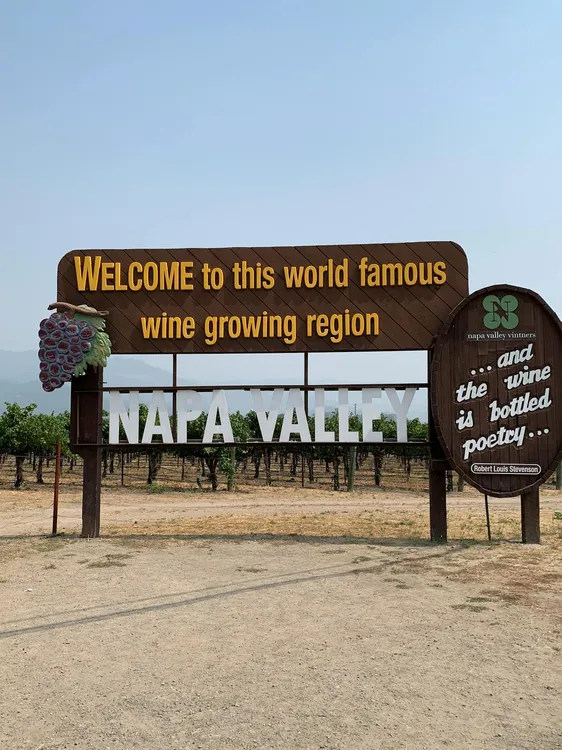California Wine Crisis 2025: Oversupply, Abandoned Vineyards and a Market on the Brink

California wine crisis 2025: Oversupply, abandoned vineyards and a market on the brink
The California wine industry is collapsing under the weight of its own excess. What was once the proud engine of American winemaking — a global symbol of innovation, luxury, and premium terroir — is now facing one of the darkest chapters in its history.
Fields are being ripped out. Tens of thousands of tons of grapes are left to rot. Growers are walking away from vineyards they’ve tended for generations. At the same time, consumption is at a 90-year low, and younger consumers are abandoning wine for alternatives.
California’s 2025 harvest was supposed to be a fresh start. Instead, it has become the perfect storm.
A market flooded with grapes — and no one wants them
According to The San Francisco Chronicle (source 1), the numbers are brutal:
- 100,000+ tons of grapes left unharvested in 2024
- Between 35,000 and 40,000 acres of vines ripped out last year
- Another 35,000–40,000 acres expected to be removed in 2025
- Tens of thousands of acres now abandoned, with growers simply walking away
- Big buyers scaling back and contracts collapsing
In Lodi alone, 15%–20% of vineyard acreage has disappeared. Monterey County growers are shutting down businesses they built over 50 years.
Many farmers can no longer secure loans because only a fraction of their grapes are under contract. Without contracts, the banks walk away — and so do growers.
The collapse spreads to Napa and Sonoma
Even California’s crown jewels cannot escape the crisis.
Sonoma County:
- 10% of total acreage projected to be pulled out
- 2,000 acres will not be replanted
- 30% of grapes not under contract
- Expected 7% drop in grape prices
Napa Valley:
Growers are removing diseased or old vines, but not replanting — a red flag for long-term production.
The result is a region dotted with fallow land and piles of dead vines, a visual symbol of the turmoil.
Consumer behavior shifts: young drinkers say “no thanks” to wine
From Vinetur (source 2), the generational data is crystal clear:
- Younger consumers increasingly prefer seltzers, craft beers, non-alcoholic drinks
- Many find wine too expensive, intimidating, or incompatible with a “social media–safe” lifestyle
- Health-conscious habits, wellness trends and digital reputation concerns push them away
- Full recovery of the market expected no earlier than 2027–2028
The industry is trying to adapt with:
- CBD-infused wines
- Non-alcoholic alternatives
- Direct-to-consumer events
- More engaging storytelling
But innovation isn’t keeping pace with the speed of the decline.
Perfect weather, disastrous timing: the harvest is too good
The Wall Street Journal (source 3) reports the most ironic twist of all:
2025 brought nearly perfect growing conditions — cool, stable temperatures, no frost, no heat waves.
This means huge volumes of high-quality grapes, but in a market that can’t absorb them.
Sonoma County Winegrowers estimate:
- 30% of grapes grown in 2025 will not be sold
Large producers like Jackson Family Wines are cutting contracts and even replanting entire vineyards to shift toward more marketable grapes like Sauvignon Blanc.
Others are desperate:
- Selling grapes on Facebook Marketplace
- Making cheap bulk wine with no guaranteed buyer
- Selling land to developers
- Ripping vines that were meant to last 30 years
Tariffs, Canada, and geopolitics: a devastating blow
The California wine sector is also suffering from external shocks:
- Canada’s retaliatory tariffs caused exports to drop 96% in Q2
- U.S. wine trade surplus with Canada flipped to a deficit for the first time ever
- Even after Canada lifted the tariff, many provinces kept U.S. wines off shelves
- Bulk wine imports to the U.S. rose 17% in 2025 despite tariffs
The expectation that tariffs on European wine would “save” domestic growers has proven wrong — the price gap is simply too large.
Oversupply is so severe that vineyards are being abandoned
In the last 20 years, nothing comparable has happened.
Growers are abandoning:
- Contracts
- Vineyards
- Entire businesses
Valley Farm Management (Monterey County), a 50-year family operation with 3,200 acres under management, announced 2025 will be its final harvest.
This is the face of the crisis.
What is really threatening California wine?
Combining insights from all three sources, the core drivers of the 2025 California wine crisis are:
1. Historic oversupply
Years of expanding acreage collided with declining demand.
2. A generational shift
Young people prefer beverages that are:
- cheaper
- easier
- low-alcohol or alcohol-free
3. Tariffs and international trade breakdowns
Canada’s sudden collapse in U.S. imports removed one of the most important export markets overnight.
4. Too-good harvests
Perfect weather = too much fruit in an already oversupplied market.
5. Major corporate pullbacks
Big players are reducing contracts, shifting varietals, or exiting categories.
6. A dramatic drop in alcohol consumption
Gallup:
Only 54% of U.S. adults now drink alcohol — the lowest level in nearly 90 years.
What happens next? A painful correction is coming
Industry leaders agree:
The only way out is to produce less.
Jeff Bitter (Allied Grape Growers) predicts:
“We need a harvest of 2.5 million tons or less to rebalance the market.”
But 2025 is shaping up to be far bigger than that.
Unless drastic measures are taken:
- More vineyards will be pulled out
- More businesses will close
- Grape prices will fall even further
- Young consumers may continue abandoning wine
California risks losing a major part of its wine identity if the market correction doesn’t happen soon.
Sources
- The San Francisco Chronicle – California’s wine harvest is shaping up to be even more brutal than last year by Jess Lander
- Vinetur – California wine industry faces oversupply and shifting tastes as younger consumers turn to alternatives by Vinetur
- The Wall Street Journal – The list of problems is long in California, the cradle of American wine… by Laura Cooper
